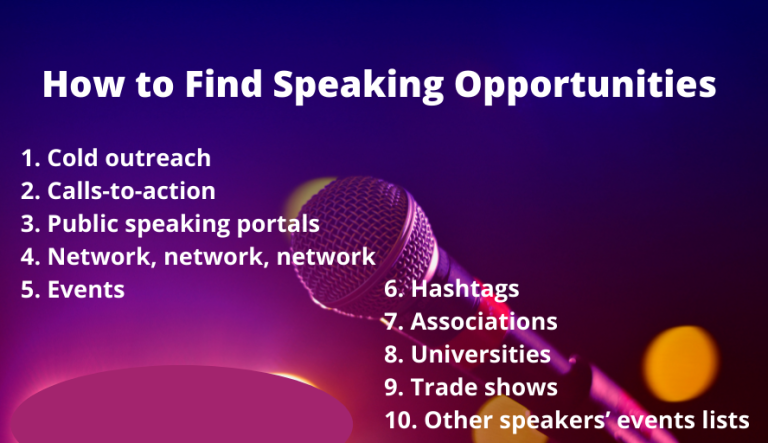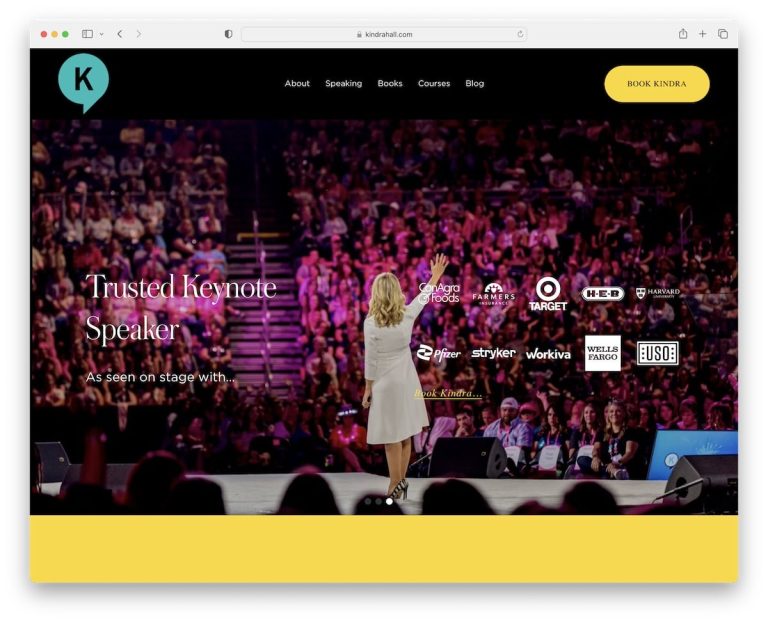What Should Be Your Target Audience When You are Starting With Public Speaking?
Your target audience when starting with public speaking should be determined based on your expertise and the purpose of your presentation. When you begin your journey into the world of public speaking, it is important to identify and focus on your target audience.
By understanding who you want to reach, you can tailor your message and delivery to effectively connect with your listeners. Your target audience should be determined by your specific area of expertise, as well as the objectives and goals of your presentation.
Whether you are addressing a group of professionals, students, or a general audience, defining your target audience will help you deliver a more impactful speech and achieve your desired outcomes. We will explore the significance of identifying your target audience and provide tips on how to connect and engage with them effectively in your public speaking endeavors.
Identifying Your Target Audience
Identifying Your Target Audience:
Understanding The Importance Of Identifying Your Target Audience
When you embark on your journey of public speaking, one of the first steps you need to take is identifying your target audience. Understanding the importance of this process is crucial for your success as a speaker. By defining your target audience, you can tailor your message specifically to their needs, wants, and preferences, ensuring that it resonates with them on a deeper level.
Defining Your Target Audience
To effectively define your target audience, you need to thoroughly understand who they are and what they want. Start by conducting market research to gather valuable insights into their demographics, including age, gender, location, and occupation. Additionally, explore their psychographics, such as their interests, values, beliefs, and motivations. This information will help you create audience personas, which are fictional representations of your ideal listeners.
With your audience personas in place, you can then evaluate how your expertise aligns with their needs. Identify the specific pain points or challenges they face, and determine how your knowledge and experience can provide valuable solutions. By doing so, you will be able to craft compelling presentations that address their concerns directly, positioning yourself as a source of trust and authority.
Moreover, knowing your target audience allows you to customize your language, tone, and delivery style according to their preferences. For instance, if your audience consists of professionals in a corporate setting, adopting a formal and business-oriented approach would be appropriate. On the other hand, if you are speaking to a group of students, using a more casual and interactive manner could resonate with them better.
By identifying your target audience, you also gain the opportunity to enhance your credibility and increase your chances of making a meaningful impact. Understanding their needs and tailoring your content to meet those needs builds trust and establishes a connection. This personalization allows you to engage your audience on a deeper level, leaving a lasting impression and increasing the likelihood of them taking action based on your message.
Benefits Of Knowing Your Target Audience
When starting with public speaking, it is essential to identify and understand your target audience. Knowing your audience has numerous benefits that can greatly enhance your effectiveness as a speaker and engage your listeners on a deeper level.
Tailoring Your Message To Their Needs
By knowing your target audience, you can tailor your message specifically to their needs and interests. Understanding their demographics, preferences, and concerns enables you to speak directly to the issues that matter most to them. This personalized approach increases the relevance and relatability of your content, making it more impactful.
Building Stronger Connections
Another advantage of knowing your target audience is the ability to build stronger connections with them. When you speak directly to the experiences and challenges they face, you create a sense of empathy and understanding. This fosters a stronger connection between you and your audience, helping them to trust and engage with your message more readily.
Increasing The Likelihood Of Engagement
Understanding your target audience also increases the likelihood of engagement during your speech. When listeners feel that you truly understand their perspective, they are more likely to actively participate and engage with your content. This can manifest through asking questions, sharing personal experiences, and expressing agreement or disagreement – all of which add depth and richness to the conversation.
Knowing your target audience is an essential step in becoming an effective public speaker. By tailoring your message to their needs, building stronger connections, and increasing engagement, you can create a meaningful and impactful experience for both yourself and your audience.
Factors To Consider When Defining Your Target Audience
Defining your target audience for public speaking requires careful consideration of factors such as demographics, interests, and needs. Understanding who your ideal audience is will help you tailor your message and engage them effectively.
Factors to consider when defining your target audience are crucial in determining the success of your public speaking journey. Understanding your audience is vital in delivering a compelling and engaging speech that resonates with them. By defining your target audience, you can tailor your content, language, and delivery to meet their specific needs and preferences. To effectively define your target audience, there are four key factors to consider: demographics, psychographics, interests and hobbies, and needs and pain points.Demographics
Knowing the demographics of your target audience is essential in crafting a message that connects with them on a personal level. Demographics include age, gender, location, education level, occupation, and income. Understanding these characteristics allows you to adjust your speaking style, level of complexity, and relevance of examples to better resonate with your audience. For example, if your target audience is college students, incorporating relatable examples from campus life would effectively capture their attention and make your speech more relatable.Psychographics
Psychographics delve into the psychological factors that influence your audience’s behavior and decision-making process. This includes their values, attitudes, beliefs, interests, and lifestyles. By understanding the psychographics of your target audience, you can tailor your speech to align with their values and tap into their motivations. For instance, if your audience values sustainability, emphasizing the environmental benefits of your topic would likely resonate with them and leave a lasting impact.Interests And Hobbies
Knowing the interests and hobbies of your target audience enables you to engage them on a more personal level. This can include sports, music, books, movies, or any other activities they enjoy. Incorporating references to their interests can make your speech more relatable and foster a sense of connection. For example, if your audience is passionate about soccer, you can include soccer analogies or stories in your speech to captivate their attention and make your content more memorable.Needs And Pain Points
Understanding the needs and pain points of your target audience helps you address their specific challenges and offer valuable solutions. By identifying their problems and concerns, you can position yourself as an expert and provide relevant insights and advice. This establishes credibility and builds trust with your audience. For instance, if your target audience struggles with time management, sharing effective strategies and tips in your speech will demonstrate your understanding of their challenges and increase the impact of your message. By considering these factors when defining your target audience, you can refine your public speaking approach to effectively engage, inspire, and leave a lasting impact on your listeners. Remember, the more you understand your audience, the better you can serve their needs and create a memorable speaking experience.Researching Your Target Audience
Researching your target audience is a crucial step in successfully starting with public speaking. This process involves understanding the demographics, preferences, and needs of the people you want to communicate with. By conducting surveys and interviews, analyzing social media insights, and leveraging market research, you can gain valuable insights to tailor your speeches and presentations to your target audience’s interests and expectations.
Conducting Surveys And Interviews
One effective method of researching your target audience is by conducting surveys and interviews. Surveys allow you to gather quantitative data, while interviews provide an opportunity for in-depth qualitative insights.
- Create a survey using online tools such as Google Forms or SurveyMonkey. Keep the questions short and straightforward to encourage high response rates.
- Share the survey through various channels like social media, email newsletters, or your website to reach your target audience.
- Consider conducting interviews with a select group of individuals who represent your ideal audience. This personal interaction can uncover valuable details about their needs, interests, and expectations.
Analyzing Social Media Insights
Another way to gain insights into your target audience is by analyzing social media data. Social media platforms provide a wealth of information about your audience’s demographics, interests, and behavior patterns.
- Use social media analytics tools like Facebook Insights, Twitter Analytics, and Instagram Insights to understand your audience’s demographics, including age, gender, location, and interests.
- Analyze the engagement metrics such as likes, comments, and shares to determine the type of content that resonates most with your audience.
- Identify the topics that generate the most discussions and comments among your followers, as this indicates areas of interest and potential speaking topics.
Leveraging Market Research
Market research can provide valuable insights into your target audience’s preferences, challenges, and desires. By leveraging existing market research data, you can save time and effort in understanding your audience.
| Steps to leverage market research: |
|---|
| 1. Identify reputable market research reports related to your industry, niche, or target audience. |
| 2. Analyze the findings of these reports, paying particular attention to customer profiles, needs, and preferences. |
| 3. Look for trends and patterns in the data that align with your target audience’s characteristics. |
| 4. Use this information to tailor your speaking topics, language, and presentation style to resonate with your intended audience. |
Researching your target audience is an ongoing process that should be regularly revisited. As you gain experience and feedback from your speaking engagements, continue refining your understanding of your target audience to ensure your messages resonate and effectively connect with them.
Effective Strategies For Reaching Your Target Audience
Learn effective strategies to reach your target audience when starting with public speaking. Find out how to identify and connect with the right people, tailor your message, and utilize social media and networking to create a strong presence. With these tactics, you can engage and captivate your audience for successful speaking engagements.
Starting with public speaking can be a daunting task, but effectively reaching your target audience is crucial for success. By employing the right strategies, you can ensure that your message reaches the people who need to hear it the most. In this section, we will explore three powerful strategies for connecting with your target audience: utilizing social media platforms, collaborating with relevant influencers, and attending industry conferences and events.Utilizing Social Media Platforms
In today’s digital age, social media platforms have become an invaluable tool for connecting with your target audience. These platforms allow you to interact and engage with your followers directly, providing them with valuable insights and information. To effectively utilize social media, consider the following strategies: 1. Create a strong online presence: Establish your personal or professional brand across various social media platforms, such as Facebook, Twitter, Instagram, and LinkedIn. Use a consistent tone and voice that resonates with your target audience. 2. Share impactful content: Regularly post engaging and informative content that addresses the pain points and interests of your target audience. This can include blog posts, videos, infographics, or quotes. Make sure to optimize your content for search engines by incorporating relevant keywords and hashtags. 3. Engage with your audience: Actively respond to comments, messages, and mentions from your followers. Show genuine interest in their opinions and perspectives. Encourage them to share their thoughts and feedback on your presentations or topics. 4. Collaborate with complementary professionals or organizations: Partner with like-minded individuals, organizations, or influencers in your niche. This collaboration can involve guest blogging, hosting joint webinars or workshops, or even cross-promoting each other’s content. These collaborations can help you expand your reach and connect with a broader audience.Collaborating With Relevant Influencers
Influencers in your industry have already built a following of individuals who trust their opinions and insights. Partnering with these influencers can help you quickly access and establish credibility with your target audience. Consider these strategies when collaborating with influencers: 1. Identify relevant influencers: Research and identify influencers who have a strong presence and engagement within your target audience. Look for individuals who share similar values or have expertise in your industry. 2. Engage and build relationships: Start by following, commenting, and sharing their content. Show genuine interest in their work and establish a connection. When reaching out to collaborate, be clear about how partnering with you can benefit both parties and their audience. 3. Create valuable content together: Collaborate with influencers to create content that provides value to your shared target audience. This can be in the form of podcasts, videos, interviews, or guest blog posts. By combining your expertise, you can deliver diverse insights and engage a wider audience. 4. Amplify your reach: When partnering with influencers, leverage their existing following by cross-promoting your content. This can include tagging each other in social media posts, mentioning each other in newsletters, or co-hosting events or webinars. This collaboration increases your reach and enhances your credibility.Attending Industry Conferences And Events
Industry conferences and events provide an excellent opportunity to connect with your target audience face-to-face. These events attract professionals and enthusiasts who are genuinely interested in your industry. Consider these strategies when attending conferences and events: 1. Research and choose relevant events: Identify conferences and events that align with your expertise and target audience. Look for events where you can share your knowledge or showcase your expertise through speaking engagements or workshops. 2. Prepare well in advance: Before attending an event, research the agenda, speakers, and attendees. This allows you to tailor your message and approach to resonate with the audience. Prepare compelling presentations or workshops that address their pain points or interests. 3. Build personal connections: Engage with attendees throughout the event by participating in networking sessions, panel discussions, or Q&A sessions. Actively listen to their challenges and provide valuable insights. Exchange contact information and follow up with personalized messages to build lasting relationships. 4. Maximize exposure: Leverage social media during the event by live-tweeting or posting updates. Share key takeaways from sessions or showcase your role as a speaker or attendee. This exposure helps you connect with a wider audience beyond the event itself. Implementing these strategies will set a strong foundation for reaching your target audience when starting with public speaking. Whether you leverage social media platforms, collaborate with relevant influencers, or attend industry conferences and events, remember to consistently provide valuable insights and engage with your audience. Connecting with your target audience is an ongoing process that requires continuous effort and adaptation.Frequently Asked Questions On What Should Be Your Target Audience When You Are Starting With Public Speaking?
Can I Choose Multiple Target Audiences When Starting With Public Speaking?
Yes, you can choose multiple target audiences when starting with public speaking. This allows you to reach a wider range of people and tailor your message to their specific needs and interests.
How Do I Identify My Target Audience For Public Speaking?
To identify your target audience for public speaking, consider who would benefit from your message the most. Research their demographics, interests, and pain points to create compelling content that resonates with them.
Why Is It Important To Know Your Target Audience In Public Speaking?
Knowing your target audience in public speaking is crucial because it helps you deliver your message effectively. By understanding their needs, you can tailor your content, language, and delivery style to engage and connect with them on a deeper level.
Conclusion
To effectively target your audience in public speaking, remember to identify their characteristics and tailor your message accordingly. Building a connection with your listeners is essential for engagement and impact. By understanding their needs, interests, and preferences, you can create valuable content that resonates with them.
Keep refining your skills, adapting to changing trends, and seeking feedback to continually improve as a speaker. Remember, connecting with your audience is the key to success in public speaking.



